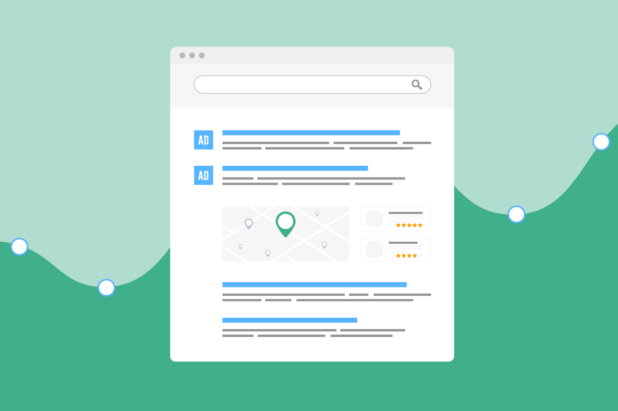There are two competing questions in search marketing that may not have obvious answers:
Why spend money on a Google Ads campaign if I can just rank organically?
Why try to rank organically if I can just run a Google Ads campaign?
The answers to these questions are multifaceted, but they are not difficult to understand. Let’s explore the push and pull between SEO vs. Google Ads and where digital marketers should invest their time and resources.
What is the difference between Google Ads and SEO?
While both focus on the same channel, search engine optimization and paid search (i.e. Google Ads) are two distinct digital marketing strategies.
Search engine optimization (SEO) is a long-term approach aimed at improving your website’s visibility in search engine results with a focus on attracting organic traffic with high-quality content, on-page optimization, and link building. It offers sustainable, cost-efficient results but takes time to achieve.
Google Ads, on the other hand, is a paid advertising strategy that provides immediate visibility through paid placements above the search results. This approach emphasizes precise targeting, conversion-focused campaigns, and flexibility to accommodate short-term goals.
While SEO builds long-term credibility and is budget-friendly over time, Google Ads offers instant results and greater control for which search terms your content is shown, making them complementary strategies in an integrated marketing plan.
However, it’s important to understand the nuances of each approach to maximize the effectiveness of using these two search marketing strategies.
Improve Your SEO Performance in 2025
Advantages of SEO
Cumulative effects of success. SEO is a foundational strategy for long-term business growth. Over time, as your content ranks higher and you gain more topical authority, you can achieve a compounding effect, increasing your visibility and organic traffic without continually increasing your investment.
Targeted traffic: Optimizing your content for search is based on targeting specific keywords and phrases that align with search intent. In other words, when your website ranks for keywords and provides users with the information they’re actually looking for, you attract higher-quality traffic. This leads to higher user satisfaction and likelihood of conversions.
Credibility: When your content appears near the top of search engine results, it conveys to your audience that your website is a reputable source of information. This perception of authority can significantly enhance your brand’s reputation, encouraging users to trust and engage with your content. Credibility, once established through SEO, contributes to long-term customer trust and brand loyalty.
Cost-efficiency: While SEO requires an upfront investment in the form of writing high-quality content and having an optimized website, it often yields a higher return on investment (ROI) in the long run. Because you are publishing content on your own website, you don’t pay per click, making it a cost-effective strategy for businesses looking to reduce marketing expenses in the long term.
Sustainability. Organic SEO results, once achieved, tend to be relatively stable and enduring. By optimizing your website with high-quality content, tending to technical needs, and occasionally refreshing existing content to keep it relevant, you can establish a sustainable, always-on presence that produces with relatively little maintenance.
“Credibility, once established through SEO, contributes to long-term customer trust and brand loyalty.” — Art Allen @punsultant Share on XAdvantages of Google Ads
Immediate visibility: As soon as you create and launch a Google Ads campaign, your ads are eligible to appear at the top of search engine results pages (SERPs) for your chosen keywords. This near-instant placement is particularly valuable for marketers looking to make a quick impact, whether it’s for announcing a new product, promoting a seasonal offer, or capitalizing on timely trends.
Heightened targeting: Beyond simply targeting keywords, Google Ads allows you to hone in on specific demographics and locations. This means your ads will only be seen by the audience you define when they are searching for content that is directly related to your offering. This precise targeting minimizes wasted ad spend and maximizes the potential for conversions.
Conversion focus: Whether your goal is to generate sales, leads, phone calls, or website visits, Google Ads are designed for driving conversions. Ad creatives are crafted to encourage users to take a specific action. This conversion-centric approach is well suited for providing measurable results and driving maximizing return on investment.
Budget control: Google Ads give you complete control over your budget, allowing you to adjust spending as needed. You can set daily or monthly limits, ensuring that you don’t exceed your allocated budget. However, perhaps even more helpful than keeping budgets predictable, increasing your budget for highly effective campaigns means you can dial up your budget and conversions along with it.
Testing opportunities: Google Ads provides tools to conduct A/B tests, or experiments, on various ad elements. This testing enables you to determine what resonates most with your audience and which elements lead to higher click-through rates, conversions, and overall campaign success. By continually experimenting and refining your ad components, you can keep your target audience engaged and drive better results.
“By continually experimenting and refining your ad components, you can keep your target audience engaged and drive better results.” — Art Allen @punsultant Share on XThe outsized performance of using SEO and Google Ads together
Think of your content marketing program as a campfire. To build a campfire you need two things: kindling and firewood.
Google Ads is the kindling: It’s easy to light super quickly, but without firewood it’ll burn out before you can get your marshmallow onto your stick.
SEO is the firewood: It is built for a long, sustained burn, but if you try to light it on its own you may never get it to catch fire.
But when you add kindling and firewood together, you can start your fire quickly and enjoy its warming glow for hours.
In other words, using SEO and Google Ads together provides marketers with several advantages that they wouldn’t be able to achieve with either strategy on its own:
Immediate visibility and long-term authority. It takes time to see results from SEO, so while you’re waiting for your high-quality content to start ranking, Google Ads can help you to drive traffic to your website immediately. This can help you to generate conversions while you’re working on improving your website’s ranking.
Keyword insights. Google Ads provides valuable data on the performance of specific keywords in terms of clicks, conversions, and cost. This data can inform your SEO strategy by helping you identify high-converting keywords that are worth targeting organically. You can align your SEO efforts with the keywords that have proven to be effective in paid advertising campaigns.
The reverse of this is also true. When you conduct keyword research for your SEO strategy, you will uncover which keywords are driving the most traffic for you and your competitors. You can then use this information to create targeted Google Ads campaigns.
Remarketing and brand awareness. Google Ads supports remarketing campaigns, which target users who have previously visited your website. If your SEO efforts attract users to your site but don’t result in immediate conversions, Google Ads gives you a second chance to re-engage these users with targeted ads. This combination of SEO and remarketing helps boost brand awareness and conversions.
“Using SEO and Google Ads together provides marketers with several advantages that they wouldn’t be able to achieve with either strategy on its own.” — Art Allen @punsultant Share on XVerdict: Invest in both but favor SEO
By integrating SEO and Google Ads into a comprehensive marketing strategy, marketers can address both short-term and long-term goals. This powerful combination of strategies ensures that budgets are allocated efficiently and take advantage of the strengths of each strategy to drive more traffic, conversions, and growth for your business.
Still, while both SEO and Google Ads are valuable components of a digital marketing strategy, well executed SEO optimizes your content for long term, sustainable visibility, its total lifetime value will generally be much higher. Because of this, SEO should receive more attention and budget allocation.
Learn more about how to optimize your content for search with our B2B Search Engine Optimization resource hub.



